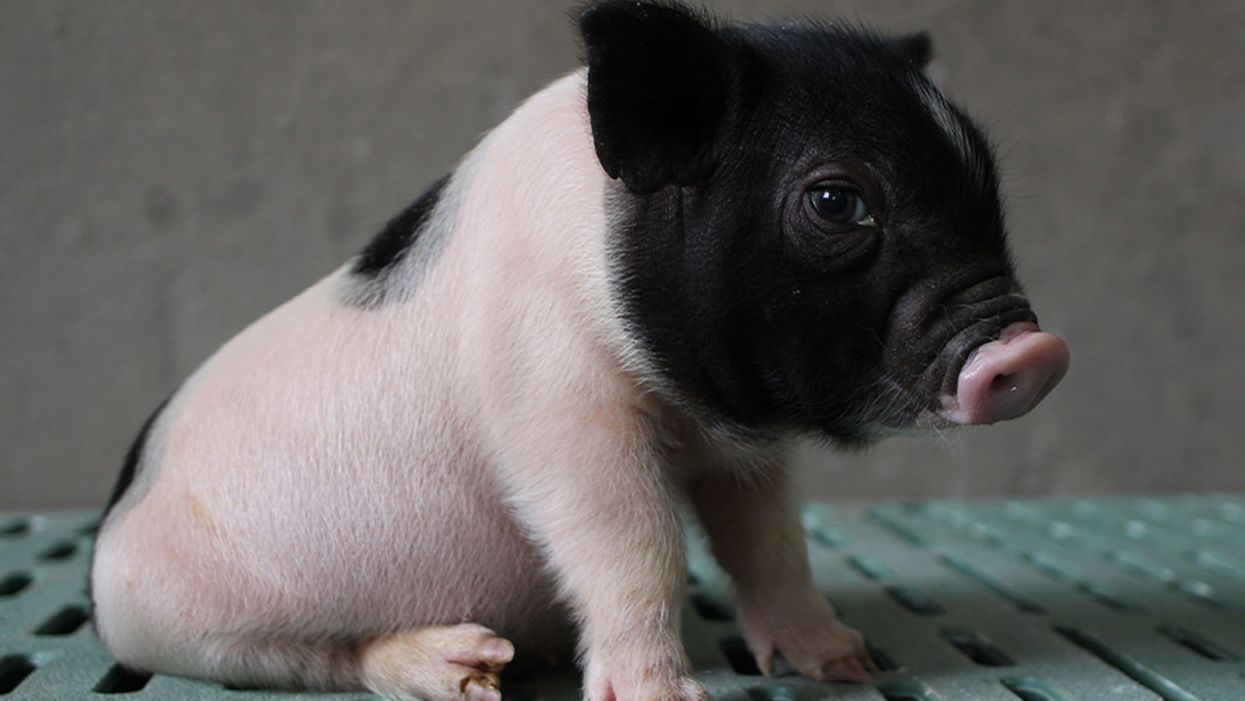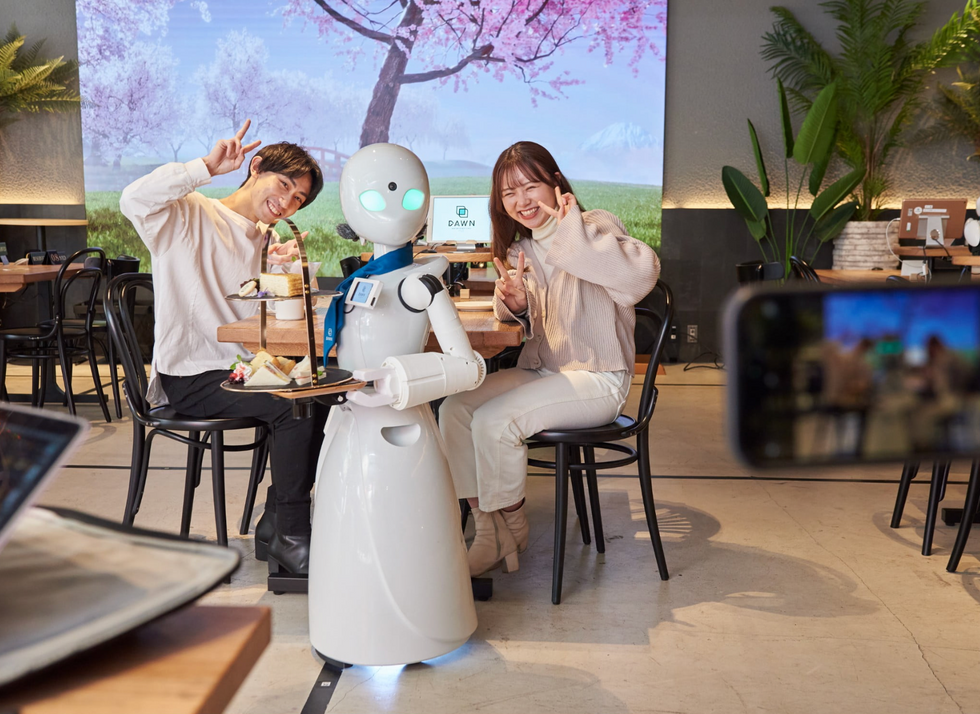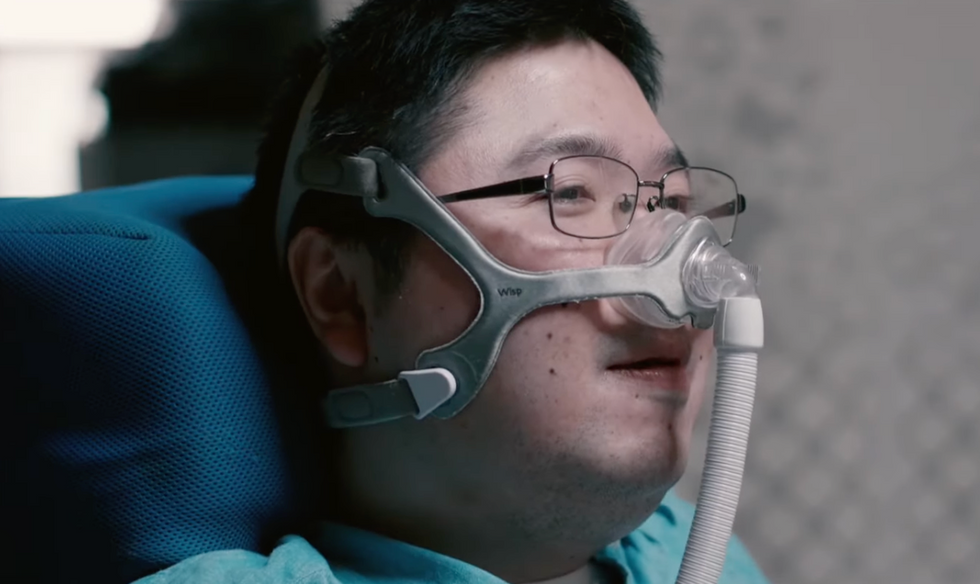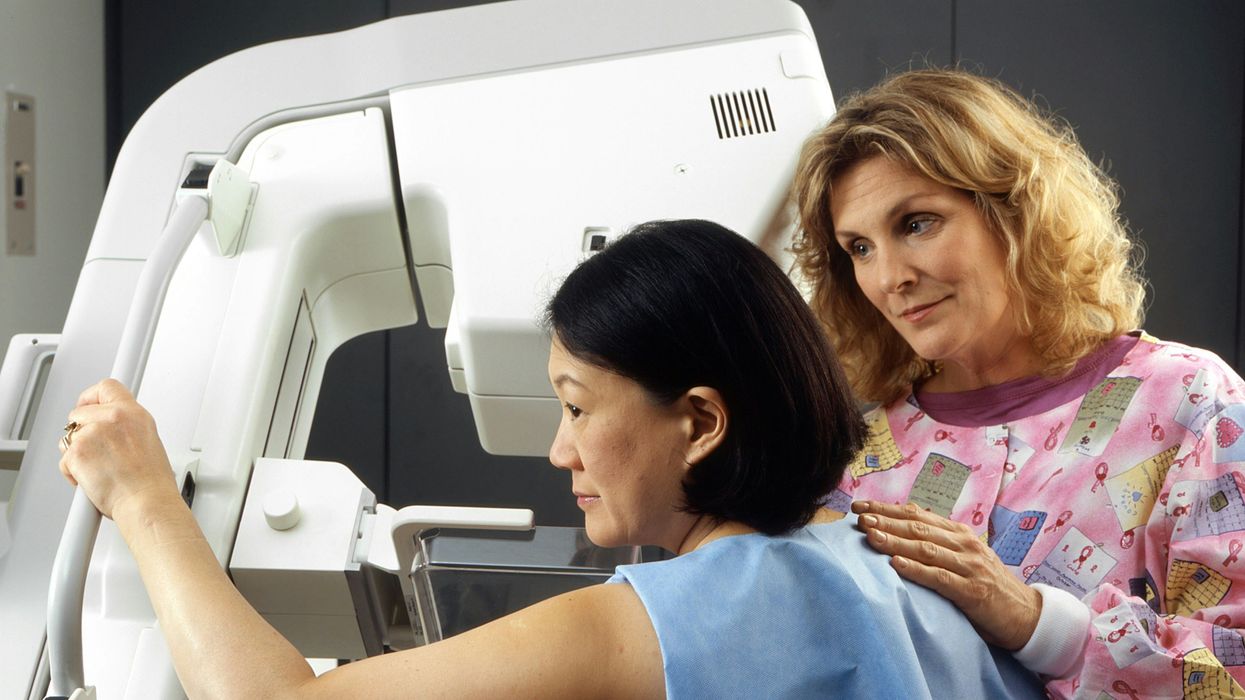Five Memorable Animals Who Expanded the Scientific Frontier

Laika, a gene-edited pig, was named in honor of the first living creature to orbit the earth, a stray dog named Laika.
Untold numbers of animals have contributed to science, in ways big and small. Studying cows and cowpox helped English doctor Edward Jenner create a smallpox vaccine; Ivan Pavlov's experiments on dogs' reactions to external stimuli heavily influenced modern behavioral psychology.
We have these five animals to thank for some of our most important scientific advancements, from space travel to better organ replacement options.
Scientists still work with rats, rabbits, and other mammals to test cosmetics and pharmaceuticals and to conduct infectious disease research. Most of these animals remain nameless and unknown to the public, but over the years, certain individuals have had an outsize effect. We have these five animals to thank for some of our most important scientific advancements, from space travel to better organ replacement options.
1) LAIKA THE DOG
Laika was the first living creature ever to orbit the Earth. In October 1957, the Soviet Sputnik I ship had made history as the first man-made object sent into Earth's orbit; Premier Nikita Khrushchev was keen to gain another Space Race victory by sending up a canine cosmonaut.
Laika ("barker" in Russian), was a stray dog, reportedly a husky-spitz mix, recruited among several other female strays for the trip. Although the scientists put extensive work into preparing Laika and the other canine finalists—evaluating their reactions to air-pressure variations, training them to adapt to pelvic sanitation devices meant to contain waste, and eventually having them live in pressurized capsules for weeks—there was no expectation that the dog would return to Earth, and only one meal's worth of food was sent up with her.
Sputnik II, six times heavier than its predecessor, launched on November 3, 1957. Soviet broadcasts reported that Laika, fitted out with surgically implanted devices to monitor her heart rate, blood pressure, and breathing rates, survived until November 12; the spacecraft stayed in orbit for five more months, burning up when it re-entered the atmosphere.
At the time, the Sputnik II team reassured the world that Laika had died painlessly of oxygen deprivation. It was only decades later, in the 1990s, that Oleg Gazenko—one of the scientists and dog trainers assigned to the mission—revealed that Laika had died 5 to 7 hours after launch from a combination of heat and stress. The capsule had overheated, probably as a result of the rushed preparation; after the fourth orbit, the temperature inside Sputnik was over 90 degrees, and it's doubtful she could have survived much past that. "The more time passes, the more I'm sorry about it. We shouldn't have done it," Gazenko said. "We did not learn enough from the mission to justify the death of the dog."
Yet even the four or five orbits that Laika did complete were enough to spur scientists to press on in the effort to send a human into space.
2) HAM THE CHIMP
Four years after Laika's ill-fated flight, a chimpanzee named Ham entered suborbital flight in the American Project Mercury MR-2 mission on January 31, 1961, becoming the first hominid in space—and unlike Laika, he returned to Earth, alive, after a 16-minute flight.
Even though Ham's flight was not destined for orbit, the spacecraft and booster used on his trip were the same combination intended for the first (human) American's trip later that year. If he came back unharmed, NASA's medical team would be prepared to okay astronaut Alan Shepard's flight.
For approximately 18 months before liftoff, Ham was trained to perform simple tasks, like pushing levers, in response to visual and auditory cues. (If he failed, he received an electric shock; correct performance earned him a treat. Pavlov would have been pleased.)
At 37 pounds, Ham was also the heaviest animal to ever make it to space. His vital signs and movements were monitored from Earth, and after a light electric shock from the ground team reminded him of his tasks, he performed his lever-pushing just a bit slower than he had on Earth, verifying that motion would not be seriously impaired in space.
Less than three months after Ham returned to Earth, on April 12, 1961, Soviet cosmonaut Yuri Gagarin became the first human to complete an orbital flight; Shepard was close behind, successfully crewing the MR-3 mission on May 5. For his part, Ham "retired" to the National Zoo in Washington D.C. for 17 years, before being transferred to the North Carolina Zoological Park; he died of liver failure in 1983 at age 26. His grave is at the International Space Hall of Fame in New Mexico.
3) KOKO THE GORILLA
A western lowland gorilla born at the San Francisco Zoo, Hanabi-ko, or "Koko," became famous in the 1970s for her cognitive and communicative abilities. Psychologist Francine "Penny" Patterson, then a doctoral student at Stanford, chose Koko to work on a language research project, teaching her American Sign Language; by age four, Koko demonstrated the ability both to make up new words and to combine known words to express herself creatively, as opposed to simply mimicking her trainer.
Koko's work with Patterson reflected levels of cognition that were higher than non-human primates had previously been thought to have; by the end of her life, her language skills were roughly equivalent to a young child's, with a vocabulary of around 1,000 signs and the ability to understand 2,000 words of spoken English.
An especially impactful study in 2012 showed that Koko had learned to play the recorder, revealing an ability for voluntary breath control that scientists had previously thought was linked closely to speech and could only be developed by humans. Barbara J. King, a biological anthropologist, suggested that Koko's immersion in a human environment may have helped her develop such a skill, and that it might be misleading to consider similar abilities "innate" or lacking in either humans or non-human primates.
Koko's displays of emotions also fascinated the public, especially those that seemed to closely mirror humans': she cared for pet kittens; appeared on Mr. Rogers' Neighborhood and untied the host's shoes for him; acted playfully with Robin Williams during a visit from him, and later expressed grief when told about the comedian's death. Koko died in her sleep in June 2018, at age 46. Patterson continues to run The Gorilla Foundation, which is dedicated to using inter-species communication to motivate conservation efforts.
4) DOLLY THE SHEEP
Dolly—named after country singer Dolly Parton—was the first mammal ever to be cloned from an adult somatic cell, using the process of nuclear transfer. She was born in 1996 as part of research by scientists Keith Campbell and Ian Wilmut of the University of Edinburgh.
By taking a donor cell from an adult sheep's mammary gland, using it to replace the cell nucleus of an unfertilized, developing egg cell, and then bringing the resultant embryo to term, Campbell and Wilmut proved that even a mature cell (one that had developed to perform mammary gland functions) could revert to an embryonic state and go on to develop into any and all parts of a mammal.
Although cloned livestock are legal in the U.S.—the FDA approved the practice in 2008, after determining that there was no difference between the meat and milk of cattle, pigs, and goats—Dolly has had an even bigger impact on stem cell research. The successful test of nuclear transfer proved that it was possible to change a cell's gene expression by changing its nucleus.
Japanese stem cell biologist Shinya Yamanaka, inspired by the birth of Dolly, won the Nobel Prize in 2012 for his adaptation of the technique. He developed induced pluripotent stem cells (iPS cells) by chemically reverting mature cells back to an embryonic-like blank state that is highly desirable for disease research and treatment. This technique allows researchers to work with such stem cells without the ethically charged complication of having to destroy a human embryo in the process.
5) LAIKA THE PIG
Named in honor of the dog who made it to space, the second science-famous Laika was a genetically engineered pig born in China in 2015 as a result of gene editing carried out by Cambridge, MA startup eGenesis and collaborators.* eGenesis aims to create pigs whose organs—hearts, kidneys, lungs, and more—are safe to transplant into people.
Using animal organs in humans (xenotransplantation) is tricky: the immune system is very good at recognizing interlopers, and the human body can start to reject an organ from another species in as little as five minutes. But pigs are otherwise exceptionally good potential donors for humans: their organs' sizes and functions are very similar, and their quick gestation and maturation make them attractive from an efficiency standpoint, given that twenty Americans die every day waiting for organ donors.
Perhaps unsurprisingly, Dolly the sheep helped move xenotransplantation forward. In the 1990s, immunologist David Sachs was able to use a similar cloning method to eliminate alpha-gal, an enzyme that is produced by most animals with immune systems, including pigs—but not humans. Since our immune systems don't recognize alpha-gal, attacks on that enzyme are a major cause of organ rejection. Sachs' experiments increased the survival time of pig organs in primates to weeks: a huge improvement, but not nearly enough for someone in need of a liver or heart.
The advent of CRISPR technology, and the ability to edit genes, has allowed another leap. In 2015, researchers at eGenesis used targeted gene-editing to eliminate the genes for porcine endogenous retroviruses from pig kidney cells. These viral elements are part of all pigs' genomes and pose a potentially high risk of infecting human cells. (After the HIV/AIDS crisis especially, there was a lot of anxiety about potentially introducing a new virus into the human population.)
The eGenesis lab used nuclear transfer to embed the edited nuclei into egg cells taken from a normal pig; and Laika was born months later—without the dangerous viral genes. eGenesis is now working to make the organs even more humanlike, with the goal of one day providing organs to every human patient in need.
*[Disclosure: In 2019, eGenesis received a series B investment from Leaps By Bayer, the funding sponsor of leapsmag. However, leapsmag is editorially independent of Bayer and is under no obligation to cover companies they invest in.]
[Correction, March 3, 2020: Laika the gene-edited pig was born in China, not Cambridge, and eGenesis is pursuing xenotransplant programs that include heart, kidney, and lung, but not skin, as originally written.]
A robot server, controlled remotely by a disabled worker, delivers drinks to patrons at the DAWN cafe in Tokyo.
A sleek, four-foot tall white robot glides across a cafe storefront in Tokyo’s Nihonbashi district, holding a two-tiered serving tray full of tea sandwiches and pastries. The cafe’s patrons smile and say thanks as they take the tray—but it’s not the robot they’re thanking. Instead, the patrons are talking to the person controlling the robot—a restaurant employee who operates the avatar from the comfort of their home.

It’s a typical scene at DAWN, short for Diverse Avatar Working Network—a cafe that launched in Tokyo six years ago as an experimental pop-up and quickly became an overnight success. Today, the cafe is a permanent fixture in Nihonbashi, staffing roughly 60 remote workers who control the robots remotely and communicate to customers via a built-in microphone.
More than just a creative idea, however, DAWN is being hailed as a life-changing opportunity. The workers who control the robots remotely (known as “pilots”) all have disabilities that limit their ability to move around freely and travel outside their homes. Worldwide, an estimated 16 percent of the global population lives with a significant disability—and according to the World Health Organization, these disabilities give rise to other problems, such as exclusion from education, unemployment, and poverty.
These are all problems that Kentaro Yoshifuji, founder and CEO of Ory Laboratory, which supplies the robot servers at DAWN, is looking to correct. Yoshifuji, who was bedridden for several years in high school due to an undisclosed health problem, launched the company to help enable people who are house-bound or bedridden to more fully participate in society, as well as end the loneliness, isolation, and feelings of worthlessness that can sometimes go hand-in-hand with being disabled.
“It’s heartbreaking to think that [people with disabilities] feel they are a burden to society, or that they fear their families suffer by caring for them,” said Yoshifuji in an interview in 2020. “We are dedicating ourselves to providing workable, technology-based solutions. That is our purpose.”

Shota, Kuwahara, a DAWN employee with muscular dystrophy, agrees. "There are many difficulties in my daily life, but I believe my life has a purpose and is not being wasted," he says. "Being useful, able to help other people, even feeling needed by others, is so motivational."
A woman receives a mammogram, which can detect the presence of tumors in a patient's breast.
When a patient is diagnosed with early-stage breast cancer, having surgery to remove the tumor is considered the standard of care. But what happens when a patient can’t have surgery?
Whether it’s due to high blood pressure, advanced age, heart issues, or other reasons, some breast cancer patients don’t qualify for a lumpectomy—one of the most common treatment options for early-stage breast cancer. A lumpectomy surgically removes the tumor while keeping the patient’s breast intact, while a mastectomy removes the entire breast and nearby lymph nodes.
Fortunately, a new technique called cryoablation is now available for breast cancer patients who either aren’t candidates for surgery or don’t feel comfortable undergoing a surgical procedure. With cryoablation, doctors use an ultrasound or CT scan to locate any tumors inside the patient’s breast. They then insert small, needle-like probes into the patient's breast which create an “ice ball” that surrounds the tumor and kills the cancer cells.
Cryoablation has been used for decades to treat cancers of the kidneys and liver—but only in the past few years have doctors been able to use the procedure to treat breast cancer patients. And while clinical trials have shown that cryoablation works for tumors smaller than 1.5 centimeters, a recent clinical trial at Memorial Sloan Kettering Cancer Center in New York has shown that it can work for larger tumors, too.
In this study, doctors performed cryoablation on patients whose tumors were, on average, 2.5 centimeters. The cryoablation procedure lasted for about 30 minutes, and patients were able to go home on the same day following treatment. Doctors then followed up with the patients after 16 months. In the follow-up, doctors found the recurrence rate for tumors after using cryoablation was only 10 percent.
For patients who don’t qualify for surgery, radiation and hormonal therapy is typically used to treat tumors. However, said Yolanda Brice, M.D., an interventional radiologist at Memorial Sloan Kettering Cancer Center, “when treated with only radiation and hormonal therapy, the tumors will eventually return.” Cryotherapy, Brice said, could be a more effective way to treat cancer for patients who can’t have surgery.
“The fact that we only saw a 10 percent recurrence rate in our study is incredibly promising,” she said.






